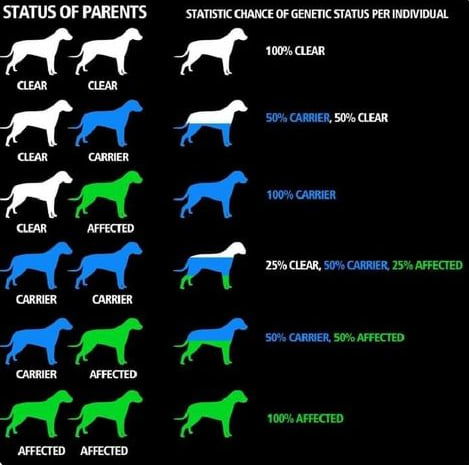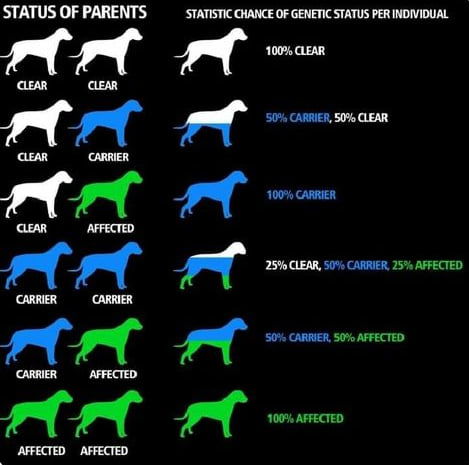CLEAR, CARRIER, AFFECTED


Italian:
Testo di Barbara Gallicchio
Quando la genetica diventa un business: teniamoci stretti i Carrier
Qualche tempo fa, forse l'anno scorso, avevo postato una riflessione sull'uso dilagante dei test genetici fatti senza alcuna cognizione di causa, da gente che non ha l'idea di come usare le informazioni - vere o false, utili o dannose - che se ne traggono.
Settimana scorsa ecco che esce un bellissimo pezzo sulla rivista Nature che si pone anche qualche domanda sulla ricaduta diciamo "commerciale" di questi test, che sono visti dai più come verità assolute da non discutere e alle quali ambire.
Se è vero, verissimo, che un DNA-test per l'identificazione dello stato di portatore sano (Carrier) di una mutazione genetica che provoca una patologia è terribilmente utile anzi, una volta messo sul mercato, diventa imprescindibile, non altrettanto si può dire per lo screening selvaggio cui stiamo assistendo ora e che andrà in una direzione amplificata.
Per esempio, poniamo il caso che un allevatore di AmStaff non voglia, giustamente, far nascere neppure un cucciolo affetto da Atassia Cerebellare. Oggi può andare sul sito di una delle ditte-laboratorio che offrono il test e leggere: "L’Atassia Cerebellare porta ad una degenerazione del sistema nervoso. Circa il 40% degli American Staffordshire Terrier sono portatori della mutazione genetica responsabile della malattia. Un test del DNA affidabile permette di individuare i riproduttori, adattare gli accoppiamenti per evitare di fare nascere cuccioli affetti e diffondere la malattia nella razza".
Quindi, se la sua femmina fosse Carrier di AC, semplicemente scegliendo un maschio Clear (che non possiede nemmeno una copia del gene mutato causale la malattia), avrebbe l'opportunità di usare ugualmente questa femmina, che supponiamo abbia eccellenti qualità, dato che l'allevatore attento vuole riprodurre da lei e, nella cucciolata, ci sarà un 50% circa che sarà Carrier (avendo ereditato dalla mamma l'allele mutante) e l'altro 50% sarà Clear. Non è stato necessario rinunciare al resto del patrimonio genetico di questa femmina. Il modo giusto di utilizzare le informazioni genetiche crude è quello che ci consente di mantenere la più grande variabilità genetica nella nostra popolazione, senza avere cuccioli/cani ammalati: perfetta strategia.
Ma ci sono DNA test che vengono immessi sul mercato diretto al proprietario o allevatore, con minime spiegazioni, che potrebbero non essere altrettanto attendibili, per esempio geni a incompleta penetranza o a penetranza correlata all'età, che vengono pagati come buoni, ma non sono affatto indicatori certi di futura malattia e invece possono diventare un criterio di scelta in selezione.
Le nostre popolazioni di animali domestici sono controllate, sono chiuse, e la percentuale di soggetti che infine parteciperà alla storia, al flusso genetico della razza, è piccola e, nelle razze poco diffuse, spesso minima, e scartare individui peraltro sani, tipici e di carattere equilibrato non farà che ridurre la vitalità del genoma globale creando pericolosi colli di bottiglia genetici e l'aumento della consanguineità incrementando il "fardello genetico" - l'insieme delle mutazioni negative che si accumula nel tempo.
Non dobbiamo aspirare ad avere riproduttori CLEAR da tutto, perchè è impossibile e pericolosissimo: tentare di eradicare un particolare gene potrebbe contemporaneamente estinguerne un altro importantissimo che si trova lì vicinissimo sul cromosoma, oppure il gene candidato in quella linea genealogica è bloccato e non si esprime o altre possibili interferenze che non siamo in grado di valutare.
Adesso poi sono usciti i test per identificare le razze che si trovano nella miscela degli incroci, dei cani non di razza, così i proprietari potranno indagare sulle predisposizioni portate dalle varie componenti del mix e fare esami e controlli probabilmente del tutto inutili e basati su percentuali statistiche irrilevanti.

Text by Tamás Jakkel:
THE BASICS OF USING GENETIC TESTS by Mendel's rules of inheritance.
DNA TESTING IS A BLESSING WHEN IT'S BEING USED PROPERLY AND CLEVERLY, and a MALDICTION WHEN USED OTHERWISE!
Luckily many breeders started to use DNA tests in their breeding programmes. BUT not all of them aware of how to use its result protecting quality without unnecessarily loosing gene pool and causing "bottle neck effect", that can be fatal in some other aspects, especially, when we want to use it to avoid OTHER problems than the one single genetic defect we are concentrating on!
My own rules:
1. Do NOT breed based only on papers and documents! Do not create a litter just because its expected parents are fitting to each other in their genetic profile!! TAKE the PRIORITY of overall QUALITY, CONFORMATION, BREEDTYPE, CHARACTER, HEALTH and FUNCTIONAL TEMPERAMENT , and THEN you choose the best amongst of them by their genetic tests in different subjects you are aware of!
2. ALWAYS give priority to those DNA test results related to the health, expected life span, quality of life, instead of features that has nothing to do with it, (like COLOUR f.e., especially if THAT colour is in the gene pool of the breed, does not affect health issues but the human made Standard does not accept it bc of some reason )!
3. Do NOT eliminate " carriers" with good quality related to 1 single gene failure out of many millions, because you will easily sacrifice all of those qualities. LEARN how to use carriers without producing even ONE SINGLE affected dog!
4. REMEMBER that these rules are only STATISTICS, the number of healthy or affected dogs can be different in any produced litter. Using 2 " carriers" can result all " clear" puppies in your litter with some luck, but has the risk to have all puppies affected, so it cannot be generally advised.
5. An " affected" dog of otherwise great qualities ( working ability, temperament or even being "clear" in some other serious illnes that affects the breed) with a " clear" counter parents will NOT produce ANY sick puppies, but because all of them will be healthy carriers, hopefully carrying the great quality, the F2 generation MUST be planned and created using DNA test! If you give away puppies from such litter to only pet owners then better to neutralize them or not giving their documents away until the new owner follows the order of the breeder for possible further breeding.
DNA TESTING IS THE WAY TO BREED NOWADAYS, USING THE EVER GROWING NUMBER OF THE SCIENCE's RESEARCHES' RESULTS, BUT You do NOT need to use unnecessary tests, just because it is available, if that failure does not exist in your breed or if it does not effect the overall quality, the life span, health, function or the quality of the dog's life!USE THE POSSIBILITIES and do NOT let yourself being MISLED by anybody with limited knowledge!



